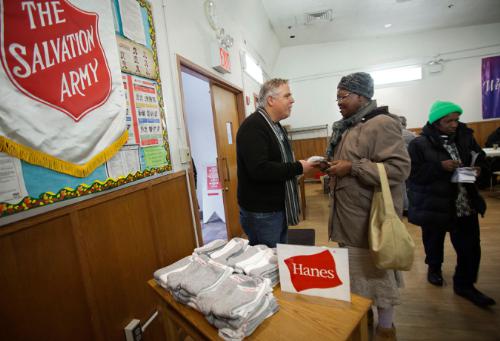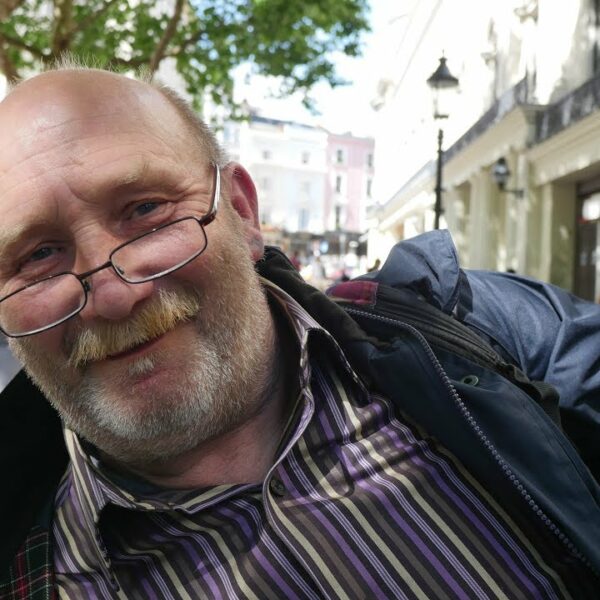The Santa Claus we all know today — that big, jolly man in the red suit with a white beard — was brought to us by Coca-Cola. From 1931 to 1964, Coca-Cola advertising showed Santa delivering toys, pausing to read a letter and enjoy a Coke, visiting with the children who stayed up to greet him, and raiding the refrigerators at a number of homes. Those images stuck with us, and Coca-Cola influenced an entire culture to change.
The biggest problem facing homelessness today is most people believe that homelessness is the result of the homeless person, and therefore they should not be helped. But the truth is: it could be lack of affordable housing, the economy, or lots of complex situations people are powerless over that can cause homelessness. A good portion of the general public literally believes homeless people have no redeeming value, and that they are less than human!
Over the years, as homelessness has increased, American society has desensitized itself from the one crisis that truly affects us all. Part of the reason is the general public receives their information from three sources, yet none actually share the real story of people experiencing homelessness.
- Nonprofits spin the story to raise funds. That’s not a bad thing, they have to fuel their mission, but the general public is fed wrong information that creates disbelief and wrong stereotypes
- Media spins the story to show homeless people as drug addicts and less than human, which again reinforces wrong stereotypes
- Government likes to share data at an academic level. The general public does not really understand information distributed by governments.
Part of the problem is lack of funding for homeless awareness and education. We see anti-smoking campaigns and fasten seat-belt campaigns – all directed to change culture to save lives, yet besides my work with Invisible People and a few small hyper-local campaigns, awareness and education of homelessness does not exist.
They say necessity breeds innovation, which is how I started with cause marketing. In 2009, I was laid off from a 3 month grant at a winter shelter. I got the idea of a national road trip but needed a car, and more importantly – I was looking for a major brand to help fight homelessness. Ford Motor Company stepped up to help and for about two years my iPhone’s photos and YouTube videos synced to Ford’s website. Right around that time Chris Brogan took notice of the crazy amount of socks I hand out to our homeless friends and connected me to Hanes, and for the last 4 years Hanes has been helping me with socks and getting the word out about homelessness.
Let’s face it, people don’t listen to politicians, research professors, or nonprofit executive directors. But major brands and their marketing firms are experts at changing behaviors. Like how Coke gave us Santa Clause, Hanes is now helping to fight homelessness.
I’ve always been honored to work with Hanes, and this year I am beyond grateful that Hanes is celebrating the holiday by giving away 500,000 socks to people in need. Over the past five years, Hanes has donated 2.7 million socks during the holidays. But what I am proudest of the most, is the awareness campaign Hanes produced this year helping to show our homeless friends as humans. What’s so amazing, and what makes this a genuine cause campaign, is there is no commercial anything attached. Hanes is just giving the socks away. No Facebook page to “like” and no marketing gimmick attached – just genuine generosity. Plus, Hanes created a social media campaign that showed real homeless numbers and helped share the stories of real people experiencing homelessness. In turn, this content exploded on social media and may have in fact broke some social records, or at least came close!
I think there are a few lessons we can learn from this: funders who support ending homelessness need to start funding awareness and educational campaigns if we are ever going to really end homelessness. Unless we change what people think about homelessness, ending it will never happen! For brands, it’s OK to connect with the homeless cause. Brands can build a mutually beneficial relationship with homeless nonprofits. The key is to be genuine in messaging and to not make the campaign over-the-top commercial. People are sick of the sales pitch, and by mixing it up and making the message about the cause and not the brand, the brand will, in turn, reap huge benefits. Probably the biggest benefit that is hard to measure, is how proud employees become when a brand does good things! Basically, the one simple lesson from all this I hope will resonate with everyone is: if you do good – good things will happen!













